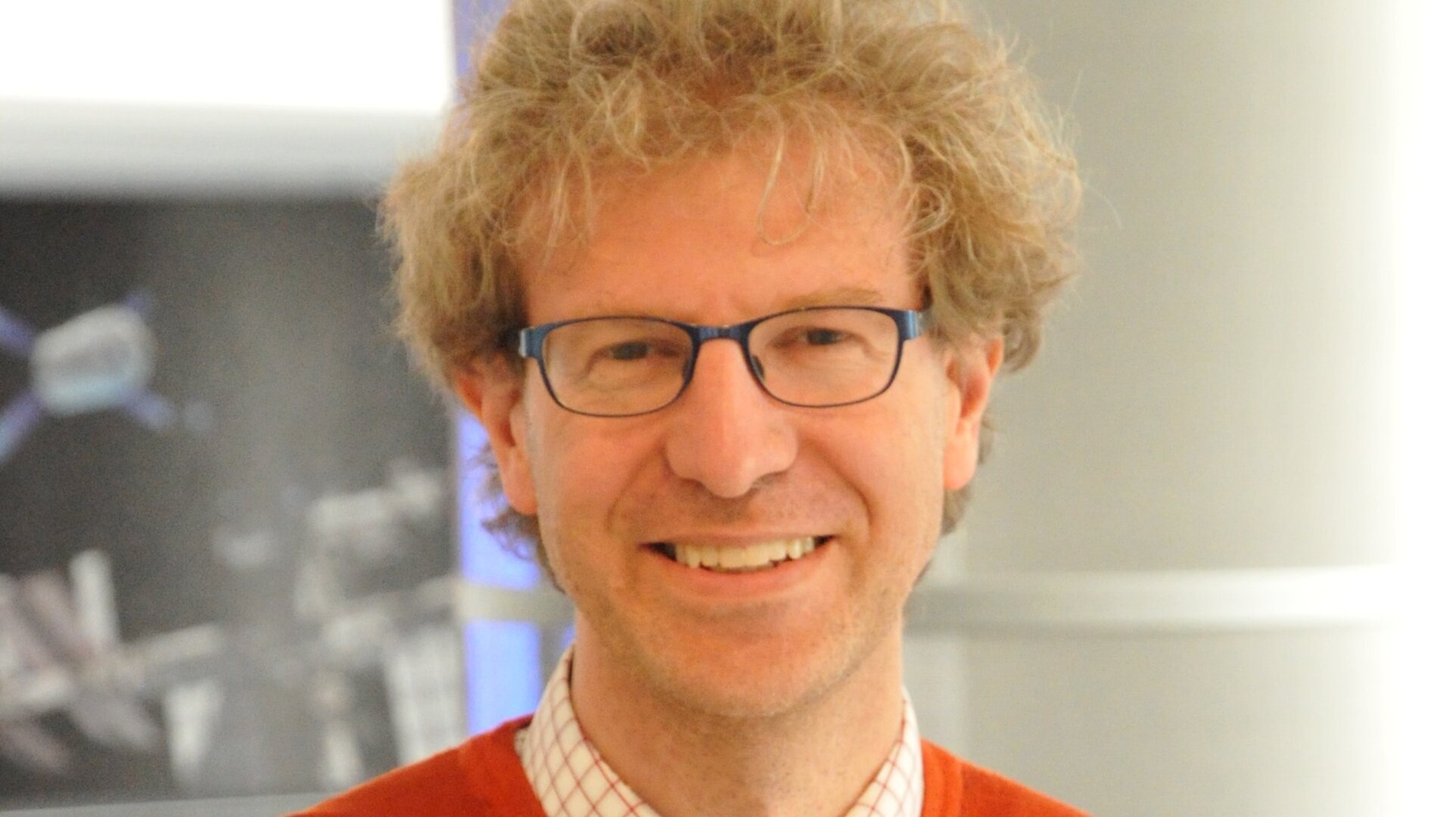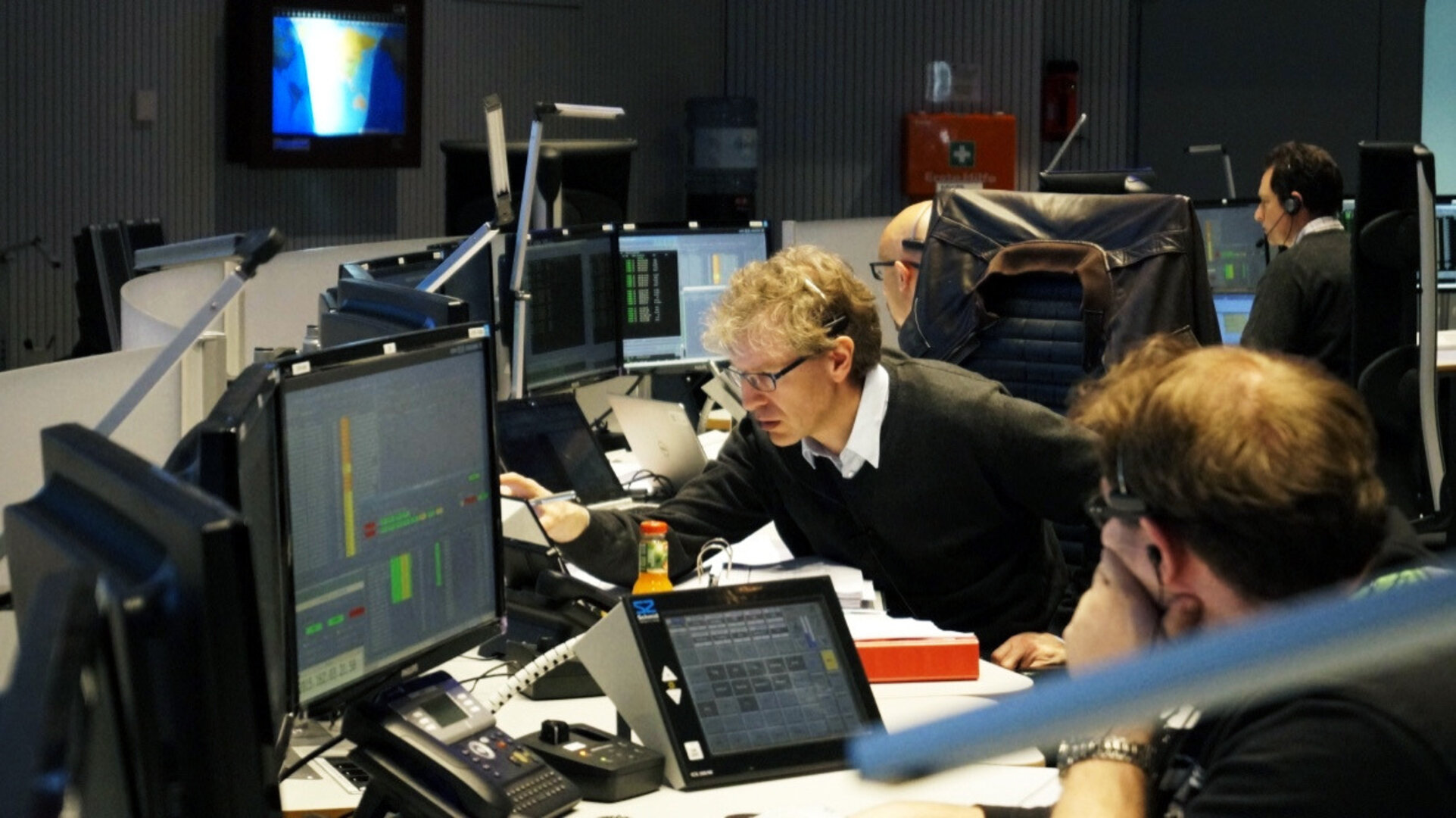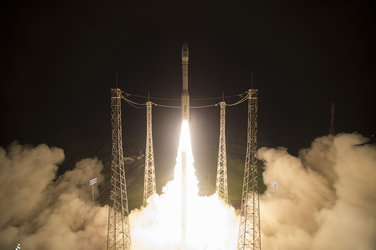Operations Manager: Franco Marchese
Franco Marchese is the Spacecraft Operations Manager (SOM) for Sentinel-2 and is responsible for training the Flight Control Team, developing the flight operations ground segment and for ensuring the safe and correct operation of the spacecraft during all phases of the mission.
He works at ESOC, ESA's Space Operations Centre, Darmstadt, Germany, and he manages a Flight Control Team of 9 engineers and spacecraft controllers, some dedicated to Sentinel-2 and some shared between the Sentinel-1 and-3 missions.
For Franco and his team, the satellite's launch will cap off a long period of careful preparation and mark the start of the intensive early orbit phase.

Born in the south of Italy, Franco Marchese spent most of his life in Brescia before moving to study aerospace engineering at the Politecnico di Milano. He began his aerospace career in 2001 with the Italian National Research Centre in support of the Gamma Ray mission AGILE. He moved to the European Space Operations Centre in 2004, initially as an external contract engineer working on Cryosat-1, specialising in attitude and orbit control systems. He also supported other Earth missions including Aeolus and MetOp-A.
He joined ESA as a regular staff member in 2007 as deputy SOM for CryoSat-2. He was transferred in 2010 to the then-nascent Sentinels mission team, working closely with the SOMs assigned to the other Sentinels. As SOM for Sentinel-2, he has worked to assemble and train the Flight Control Team and ensure that the flight operations 'ground segment' – the systems on Earth that enable satellite control – match the demanding scientific, technical and operational requirements of the Copernicus programme.
ESA: Describe some of the challenges you have had to solve in getting ready for launch.
Franco Marchese
The Sentinel-2 schedule has kept us under a lot of pressure, in particular regarding the system validation test program; SVTs are when we connect our mission control systems here at ESOC to the actual satellite on ground, or an identical non-flying engineering model, to validate all our ground systems and check to make sure the spacecraft reacts as we expect to commands. We only did the last one of these recently during our team simulation training campaign, because it was not possible to integrate the optical payload (and therefore test it) beforehand. This has meant compressed time to apply fixes and get things right. We're on track, thanks as well to the common development of our flight operations ground segment with that of the other Sentinels, but it has meant the team have had to cope with some extra effort.
On the personal side, my first child was born last year and I had to help my wife, who also works for a mission in preparation for launch. It was not easy to balance the responsibilities of my role as SOM with those of being a father and it required working sometimes at odd times. Fortunately, I have a very understanding wife and extremely supportive team.
Sentinel-2 is presenting us with a number of operational challenges, but we're ready for these and are looking forward to getting our first satellite into orbit.
ESA: From the mission operations standpoint, what is unique about the Sentinel-2 mission?
Franco Marchese
Like all the Sentinels, Sentinel-2 has a high degree of on-board autonomy. Each satellite can operate nominally for at least 72 hours without any ground intervention, even in the case of a single on-board failure. For the Flight Control Team, this means that the main focus of activity is going to be the off-line mission planning, ensuring that the spacecraft system and payload commands sent to the satellite are correct.
Also, like Sentinels-1 and -3, Sentinel-2 will be a dual-ship mission; we're launching 2A now, with the identical 2B expected later in 2016. This will allow the mission to deliver an image of the same point of Earth every five days. This requires, though, that the Flight Control Team reacts very fast and efficiently to recover any non-nominal behaviour of either satellite.
Our imager payload – both Sentinel-2 satellites will carry the same multispectral imager providing high-resolution optical imagery – will generate a great deal of data, so we will use, like Sentinel-1, a laser communication link to transfer data to ground via the ESA geostationary telecommunications satellite Alphasat and EDRS, used as data relay. Due to the demanding Copernicus requirements, we need to provide data rapidly for relief during human and natural disasters, for example. This will require us to generate commands every other day to support the data transfer operations.
Finally, we will only have two communication passes per day with our ground station at Kiruna. This means that the time available to my team to perform routine tasks as well as any needed recovery operations (when in contact with the spacecraft) will be very limited.
So, Sentinel-2 is presenting us with a number of operational challenges, but we're ready for these and are looking forward to getting our first satellite into orbit.

ESA: For the team at ESOC, what happens during and immediately after launch?
Franco Marchese
Up to 6 hours before lift-off, we'll have a cable data link to the satellite sitting on top of its Vega launcher in Kourou, so we will be closely monitoring its status from the Main Control Room in ESOC. We lose this connection when the umbilical cable to the launcher disconnects during final countdown before lift-off and then the next time we 'hear' from Sentinel-2A will be when the spacecraft automatically activates its transmitter after separation: this is the most crucial moment when we must acquire the radio signals from the spacecraft, so as to establish a reliable telecommand link.
This will mark the start of the critical activities of LEOP – the launch and early orbit phase. The Flight Control Team, augmented by specialists from flight dynamics, ground stations and ground software as well as from the satellite manufacturer and the ESA Sentinel project at ESTEC, will work in shifts in the Main Control Room 24 hours per day in order to get the satellite safely configured into its 'higher' modes of operation.
While ESA's 15 m-diameter ground station at Kiruna will be our main station throughout the routine phase, we'll have additional tracking support from stations at Perth, Svalbard, Troll and Alaska for the three-day LEOP phase.
- On Day 1, we'll switch on all platform systems and make sure the satellite is basically healthy. One important system is our GPS navigation; Sentinel-2 must deliver imagery with an accuracy of 20m on the ground, so that means we have to know very precisely where our satellite is at any time, and that will be achieved using GPS signals. Our colleagues from ESOC's Flight Dynamics team will also do a very accurate orbit determination in the traditional way, that is by analysing the radio signals received from the spacecraft, so we'll know where our mission is located.
- On Day 2, we'll activate the on-board mass memory unit and start to retrieve some of the recorded data, and release the shutter lock on the payload instrument that protects the very sensitive detectors from the light of the Sun.
- On Day 3, we'll perform our first trajectory correction manoeuvres, trimming the orbit that the launcher delivered us into, to achieve the final height of 786 km, at an inclination of 98.5º – that's passing almost directly over the poles.
Immediately after the end of LEOP, the Mission Control Team will have to remain very focused because we aim to deliver the first payload image only two days later. This will be achieved thanks to intensive collaboration with our colleagues at ESRIN, ESTEC and CNES. These two days will mark the start of a three-month commissioning phase, when the reference ground track will be acquired by manoeuvring the spacecraft based on input from Flight Dynamics and the multispectral instrument will be thoroughly checked out in preparation for the routine phase. Also, the first inter-satellite laser links will be tested with the optical payload.
The first year in particular will be very intense, as we will have to manage the routine operations of Sentinel-2A in parallel with preparing for the launch of Sentinel-2B.
ESA: What are the challenges once you're in the routine phase?
Franco Marchese
The big challenge for the life of this mission will be reacting to contingencies, should any occur. Of course, any mission can experience unforeseen issues and usually the Flight Control Team can take a reasonable amount of time to troubleshoot and solve the problem. But in the case of the Sentinels, we have very strict mission requirements stemming from the operational needs of the Copernicus programme, and we won't have unlimited time to solve problems as they arise. So our team will have to be ready at any time to react quickly.
The first year in particular will be very intense, as we will have to manage the routine operations of Sentinel-2A in parallel with preparing for the launch of Sentinel-2B.
ESA: Are there synergies from the mission operations standpoint between the various Sentinel satellites?
Franco Marchese
Yes. For example, we will work closely with the Sentinel-1 Flight Control Team; the satellites are different, but we're using identical mission control systems and most of the same ground segment. In the case of some on-board systems, we also have substantially common flight operation procedures.
ESA: As Operations Manager, how do you maintain team morale when problems arise?
Franco Marchese
The engineers assigned to Sentinel-2 are really terrific – they are very motivated by achieving their goals and the high level of quality that they manage to achieve in their work shows this. My job is to enable them to do that; I like to let them take responsibility for solving problems as a team, and so far it is working very well. We've already met all the pre-launch targets, and the team and ground systems are definitely ready for launch.
I also ensure that individual operations engineers become familiar with at least one area of the entire ground segment – the portions beyond what we are directly responsible for here at ESOC. We have a great team and everyone has worked very hard to get ready; I'm very pleased with our progress.
ESA: What do you do in your spare time to relax?
Franco Marchese
Well, none of us have much spare time these days. But I do enjoy spending time with my family – playing with my daughter helps me forget about the mission for a while. But I'm always motivated to get back into ESOC and continue getting ready for our trip to space.
Editor's note:
This is one in a series of interviews with a few of the key people that are involved in the Sentinel-2 mission. Please check back as further interviews will be added to over the coming weeks.












